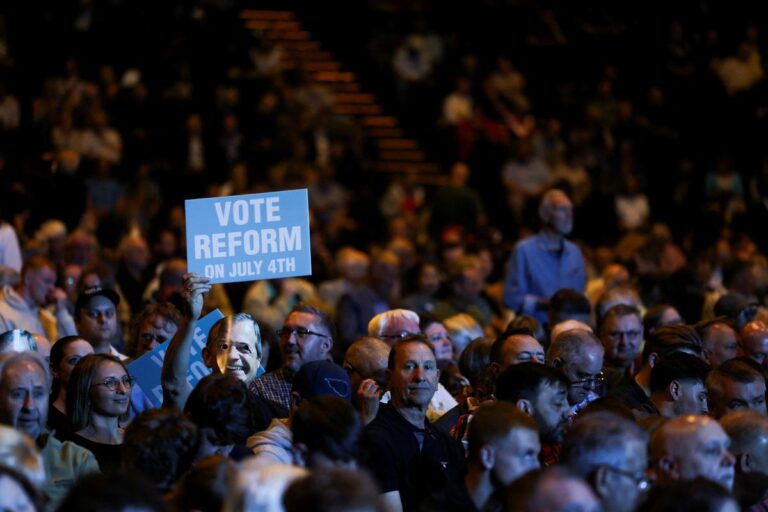As the UK election campaign enters its final stages, polling agency findings are once again in the spotlight, with recent predictions predicting a record victory for the opposition Labour Party drawing attention.
Labour’s huge 20-point lead in the opinion polls has barely budgered since Chancellor Rishi Sunak announced a general election for July 4 last month, and the focus has shifted from whether Keir Starmer’s victory will actually happen to how big it will be.
Related article: UK general election: Opinion poll predicts Labour will win majority
But because Britain’s single-member constituency system means the number of seats each party wins does not strictly reflect the share of the vote nationwide, pollsters use so-called MRP modelling to more accurately predict outcomes.
What is MRP and how does it work?
MRP stands for Multilevel Regression and Post-stratification and is used by pollsters to estimate local-level public opinion from large, national samples. Polling companies describe it as a model that uses polling data, rather than the polls themselves.
Pollsters build statistical models that outline how voting intentions vary based on participants’ characteristics and where they live, taking into account factors such as age, income, education level and past voting behavior.
The model is used to generate estimates of voting intentions for different types of people living in different parts of the country.
Pollsters combine that with official data on the number of each type of person living in each area to estimate voting intentions across constituencies.
The exact models used to predict voter behavior vary from pollster to pollster.
How is it different from other voting methods?
Traditional polling methods often use a uniform nationwide fluctuation in support to predict how many seats a party will win.
This is based on the assumption that there is the same change in each party’s vote share across the country, which in reality is rarely the case, and can lead to overestimating a party’s performance in some areas and underestimating it in others.

MRP sample sizes are also much larger: While a typical political poll relies on 1,000-2,000 responses, MRP modeling uses data from tens of thousands of voters.
Have they been right in the past?
MRP is a relatively new methodology: after pollsters mis-announced the 2015 election results and underestimated support for Brexit in the 2016 referendum, many began using more sophisticated data analysis to produce seat-by-seat results.
YouGov used MRP to accurately predict that Conservative Prime Minister Theresa May would fail to win a majority in 2017. YouGov said its model correctly predicted 93% of seats that year.
This method had some success in 2019, when YouGov’s MRP predicted a clear Conservative majority, although it underestimated the size of it.
What are the limitations?
British voters have become more unpredictable as Brexit has shaken traditional political loyalties.
A survey by the British Election Study found that more voters switched support between the two main parties in the 2017 election than in any other poll since 1966. The more people who change their minds, the harder it becomes to draw a representative sample.

“MRP only works if there is a strong connection between the characteristics of individuals and areas, on the one hand, and the public opinion being modelled, on the other,” the British Council for Public Opinion Research says on its website.
Pollsters describe the MRP as an estimate of the range of possible outcomes.
Savanta’s MRP, published on June 19, predicted that Labour would win 516 of the 650 seats in the House of Commons, and the Conservatives would win 53. However, it noted that in around 200 seats the difference in vote share between the first and second-placed parties was less than 7.5 percentage points, making these “unpredictable” and meaning the final outcome could be very different.
In the YouGov MRP released on the same day, Labour won 425 seats and the Conservatives won 108, but 109 constituencies were classified as “close races” where the difference between the first and second place parties was less than five points.
There may also be issues specific to individual sheets that MRP modeling does not capture.
This is a premium article available only to our subscribers. To read over 250 premium articles every month,
You’ve reached your limit for free articles. Support quality journalism.
You’ve reached your limit for free articles. Support quality journalism.
You have read {{data.cm.views}} from {{data.cm.maxViews}} Free articles.
This is the last free article.

